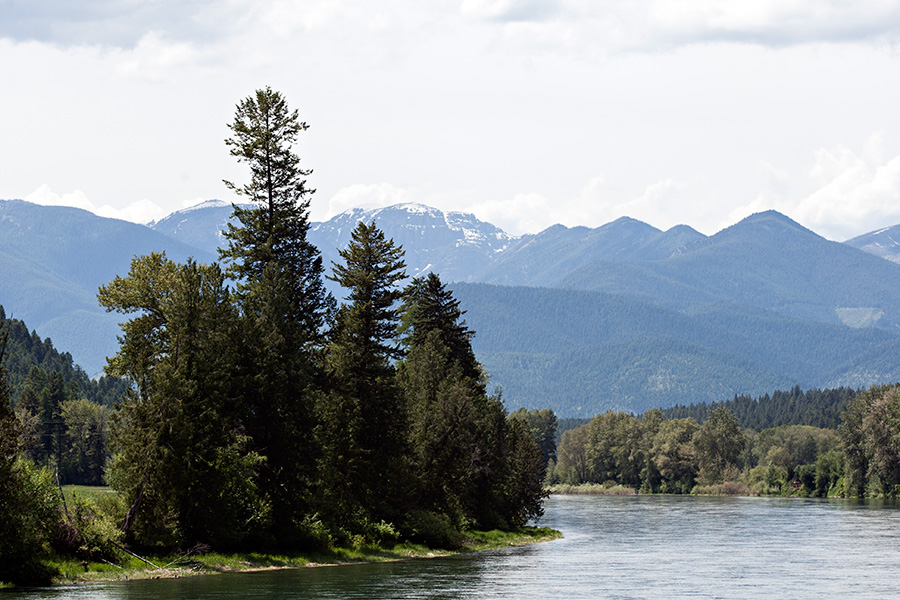For researchers studying the effects of upstream Canadian coal mining on the Kootenai River watershed, it can sometimes feel as though their work takes place in an echo chamber.
“Everyone who’s closely involved with this issue is very concerned, and rightfully so,” said Trevor Selch, a water pollution biologist for Montana Fish, Wildlife and Parks, who has conducted years of fish muscle-tissue sampling on Lake Koocanusa. “But outside our group it probably doesn’t get the same amount of attention it deserves. On the Kootenai, unlike Flathead Lake, it tends to be forgotten.”
The seriousness and scope of the trouble brewing on the Kootenai River, as well as the Canadian waters upstream and on the sprawling Lake Koocanusa reservoir that straddles the international boundary, depends on which players you ask. But a growing consensus, and a mounting body of evidence, suggests that it is one of the biggest threats facing Montana’s aquatic health.
That much was apparent at a pair of recent public meetings designed to inform local community members about the ongoing research efforts to better understand the impacts of mining pollution on fish species, water quality, human health and the outdoor economy.
Organized by the nonprofit Kootenai River Network, a panel of stakeholders and agency experts convened for separate meetings in Eureka and Kalispell to update the public and answer questions from residents who occasionally expressed surprise that the issue hadn’t been resolved.
“I think there were enough questions from the community that it’s clear we need more of these public meetings,” Selch said.
For years, conservation groups and scientists on both sides of the border have been raising concerns about five coal mines owned and operated by Teck Resources in the Elk River Valley of British Columbia — concerns they say gained urgency when an experimental water treatment facility designed to stem the flow of a mining contaminant called selenium was found to be releasing an even more biologically toxic form of the heavy metal.
A spokesperson for Teck, the Vancouver-based mining giant, acknowledged the problem at the company’s water treatment plans, and said a plan has been identified to hopefully correct it.
Meanwhile, the mining operations continue, even as scientists and researchers from a multitude of state and federal agencies work to develop a site-specific plan for protecting Lake Koocanusa, where they continue to monitor the influx of selenium leaching out of the upstream coal mines.
Selch and his crew collected muscle-tissue samples from seven species of fish in Lake Koocanusa in 2008 and again in 2013, and the data shows increasing trends in elevated selenium levels; moreover, the inrush of selenium won’t abate even if the mining operations shut down production, such is the scope of the footprint and the size of waste-rock piles leaching into the waterways.
Given that in the five-year period between 2008 and 2013 Selch tracked increases of selenium in muscle-tissue concentrations at rates of between 21 and 70 percent, “that is pretty alarming.”
Selch has continued to collect annual data on Lake Koocanusa, primarily from cutthroat and rainbow trout that are considered among the most sensitive species, while Teck has similarly been monitoring the water quality upstream.
Next May, Selch and his team will conduct another full-scale, five-year assessment of the fish species, which will serve as telling evidence to help determine whether the alarming trajectory of increased selenium levels is continuing.
“To me that is going to be the real test,” he said. “I don’t know what to expect. I am hoping we don’t see another big increase. I’m not optimistic necessarily, but we will have to wait and see what the data show. That will give us strong evidence of whether levels are going to keep rising.”
Leaders of the Confederated Salish and Kootenai Tribes, as well as the Ktunaxa Nation of B.C. and the Kootenai Tribe of Idaho, are pushing the governments of both countries to form a bi-national oversight group to streamline discussions between the federal regulatory bodies.
The coalition of tribes recently wrote separate letters to U.S. Secretary of State Rex Tillerson and Canadian Minister of Foreign Affairs Chrystia Freeland, as well as to Montana Gov. Steve Bullock and B.C. Environment Minister Mary Polak, urging the state and federal officials to address the legacy impacts in the Elk and Kootenai river watersheds and requesting a stronger framework to protect transboundary resources.
Ryland Nelson, a program manager with the Canadian environmental group Wildsight, urged deeper involvement from B.C.’s Ministry of Environment, the agency tasked with protecting the province’s air and water.
“Our message definitely echoes the tribes’ request for a bi-national working group to be established so there is more federal-to-federal involvement,” he said. “Currently the Canadian federal government is silent and absent on this issue, and they need to bring some credibility and resources to this process. We need all hands on deck.”
Erin Sexton, a University of Montana researcher who was among the first to uncover evidence of high concentrations of the mining pollutants in fish species, attended the meeting on behalf of CSKT. While much work remains to be done, she said panelists agreed the issue is paramount.
“We all emphasized that this is one of the biggest threats facing Montana’s waters, and we need all the help we can get to try and address the problem,” Sexton said.
Correction: An earlier version of this article misidentified Canada’s Foreign Minister as Chrystia Hyland. Her name is Chrystia Freeland. The Beacon regrets the error.
